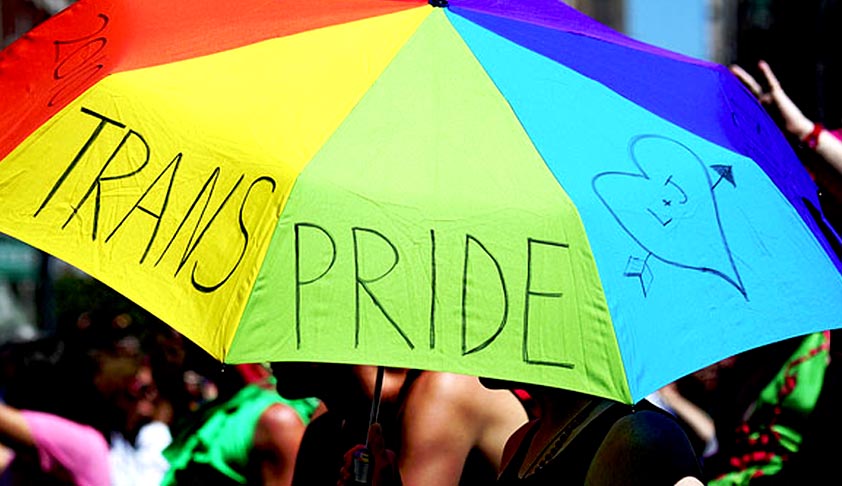The “Third” Gender
Pragalbhi Joshi
20 May 2014 8:18 PM IST

Transgenders are known by different names in South Asia. There is a misconception that they are "only men who have feminine gender identity, adopt feminine gender roles and wear women's clothing". But, in reality, the community is significantly more diverse than this notion.They were counted for the first time in the Census 2011, in which they constituted a separate category.This was the first step taken by the government to get this community some basic rights.
The transgenders have been physically violated on a number of occasions. The newspapers are full with stories telling the gory truth that this community has to live through.
With National Legal Services Authority vs Union of India, the Court takes a crucial step towards course correcting. When it comes to violations of minority rights, "Constitutional Courts cannot be mute spectators", they declare. In the process they craft an immensely empowering document that is deeply empathetic to transgender and oppression, while also giving jurisprudential ammunition to the entire LGBT community.
With relation to recognition of transgender identity, the Court did a comparative law analysis. It started with the Corbett vs Corbett, which placed a significant emphasis on biological sex. To the standards needed for a medical and surgical procedures to transform the sex of a person in Attorney General vs. Otahuhu Family Court. The court dismissed the biological test. According to them , the “psychological factor and thinking of a transsexual has to be given primacy”
The Court has taken a meaningful step by giving this community recognition. However, accessibility is also an issue. These individuals face a lot of problems on the way. The prominent may be: the requirement of extended counselling and certification by Gender Dysphoria. Also, there is a lack of serious procedure which gives recognition. The Argentinean law, however, goes by self- recognition not on surgical procedure or a therapy of hormone. The Court also makes a strong move, by saying that these third gender do not fall into the male/female binary.This is a total transformation from the pre-existing comparative law.
The declaration in Para 53 provides for a blue print to the marginalised community for their judicially enforceable rights in future. The hijras/transgenders are given legal protection under Article 14,15, 16 of the Constitution Of India. Any kind of discrimination is to be prohibited. As it maybe noted when it is said that “gave emphasis to the fundamental right against sex discrimination so as to prevent the direct or indirect attitude to treat people differently, for the reason of not being in conformity with stereotypical generalizations of binary genders". In a way taking a leap forward from the jurisprudence started from Anuj Garg vs. Union Of India.
The Court finds transgenders to be a socially and educationally backward class envisaged under Article 15(4) and also entitled to reservation in matters of appointment in Article 16(4) - a powerful statement to be sure, but given the way the judgment slips in and out of different notions of transgender identity, it also points to an administrative nightmare without further clarification.
Their Article 19 (1) (a) argument locates gender identity as protected expression under the Constitution. However, it is critical to Koushal's argument which had a false distinction between the sexual acts and sexual identity . This keep from identifying homosexuals as a class and consequently the protection is guaranteed under the Article 14 and 15. Finally, they locate gender identity in a dignity analysis under Article 21 - "Gender ... constitutes the core of one's sense of being as well as an integral part of a person's identity”. The judgement is against Mr, Koushal’s logic.
From Justice Radhakrishnan's opening lines talking about the moral failure of society's unwillingness to contain or embrace different gender identities and expressions, down to Justice Sikhri's cognizance of the painful process of transitioning from one gender to another, this is a text that is shot through with empathy.
Ultimately, the Court has given a set of 9 directions. They vary from the specific (directions to operate separate HIV centres) to the broad (proper measures to provide medical care to transgenders in hospitals ) to the vague (measures to regain their respect and place in the society which once they enjoyed in our cultural and social life). ]They might be thrashed for being overbroad and under inclusive. However an important part, is what follows.
In 2013, the Ministry of Social Justice and Empowerment constituted an Expert Committee to provide an in-depth study of the problems faced by the transgender community and suggest governmental measures. The Committee Report provides a voluminous set of recommendations for addressing transgender discrimination at various levels which the judgment itself does not specifically touch upon. What the judgment does do however, is ask for the recommendations themselves to be examined based on the legal declarations it makes, and implemented within six months. The breadth of the judgment's declarations then will potentially be a useful aid in meaningfully implementing these recommendations.
 Pragalbhi Joshi is a 1st year student of B.B.A. LL.B. in National Law University, Odisha.
Pragalbhi Joshi is a 1st year student of B.B.A. LL.B. in National Law University, Odisha.
